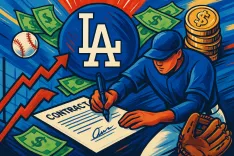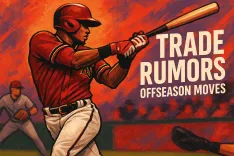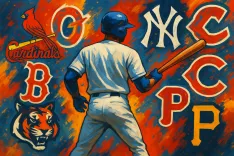MLB Offseason Team Projections: Analyzing the Six Tiers

As the off-season develops, MLB teams have been categorized into six distinct tiers, reflecting their anticipated aggressiveness in the upcoming offseason. These tiers are as follows: Tier 1: Teams That Are Participating in 2025; Tier 2: The Angels; Tier 3: Emerging Teams That Need to Spend; Tier 4: Contending Teams That Will Make Moderate Additions; Tier 5: Teams That Will Spend, Although It's Unclear to What Degree; and Tier 6: Teams That Will Either Sign Juan Soto or Land Multiple Stars Another Way.
The first tier is comprised of the Colorado Rockies, Miami Marlins, Chicago White Sox, Cleveland Guardians, Tampa Bay Rays, and St. Louis Cardinals. Each of these teams faces financial constraints that shape their strategy, often prioritizing cost efficiency over star acquisitions. For instance, the Guardians, fresh off an ALCS appearance, are rumored to be considering trading their All-Star first baseman, Josh Naylor, prior to his final year of arbitration. Similarly, the Rockies, despite their loyal fanbase and a beautiful home stadium, have experienced six consecutive losing seasons and are projected to lower their payroll in 2025. The unexpected inclusion of the Cardinals suggests a shift in their strategy to focus on player development rather than committing heavily to the MLB payroll for the next season, which could result in the departure of veteran players like Paul Goldschmidt and Kyle Gibson.
In the second tier, the Los Angeles Angels stand out. After Shohei Ohtani's successful season with another franchise, the Angels struggled, finishing with a record of 63-99. Their star players, Mike Trout and Anthony Rendon, managed only a combined 86 games due to injuries. Despite these challenges, the Angels' front office has been active, including the acquisition of Jorge Soler's contract and the signing of veterans Travis d'Arnaud and Kyle Hendricks. However, there remains skepticism regarding the team's overall direction and whether these additions will significantly improve their prospects in 2025, especially given the lack of a cohesive strategy.
The third tier encompasses the Detroit Tigers, Cincinnati Reds, Pittsburgh Pirates, Washington Nationals, Seattle Mariners, and Oakland Athletics. These franchises have demonstrated inconsistent spending in recent years despite having young, promising talent. Particularly, the Pirates, with a strong starting rotation featuring Paul Skenes, Jared Jones, and Mitch Keller, face pressure to invest meaningfully in their roster. The passing of long-time owners Mike Ilitch and Ted Lerner has highlighted the need for new ownership to demonstrate a commitment to acquiring star players, especially as the Tigers and Nationals were once among the league's largest spenders.
Tier four includes the Chicago Cubs, Minnesota Twins, Texas Rangers, Milwaukee Brewers, and Arizona Diamondbacks. While these teams are expected to make some spending moves in free agency, their limits are apparent. The Cubs, for instance, have notably distanced themselves from pursuing high-profile players like Juan Soto. Their roster lacks superstar talent, often highlighting an approach that falls short of expectations for a major market team. The Brewers are positioned similarly; while they are not expected to abstain from free agency, they face potential losses in their roster as key players become free agents. Meanwhile, the Diamondbacks, despite a recent playoffs appearance, continue to evaluate their roster's needs, including the potential for trades involving top prospects.
The fifth tier is dominated by teams such as the Philadelphia Phillies, Houston Astros, San Francisco Giants, Toronto Blue Jays, Boston Red Sox, Baltimore Orioles, Kansas City Royals, Atlanta Braves, and San Diego Padres. Each of these teams has a history of spending and is likely to continue that trend in the offseason. With significant payroll commitments already looming for the Phillies, their aggressive ownership is poised to explore various strategic options, potentially focusing more on trades in response to their recent playoff exit. Meanwhile, the Braves and Orioles are also projected to allocate resources towards key positions and may need to replace ace pitchers rather than solely relying on re-signing them.
Finally, tier six features the New York Yankees, New York Mets, and Los Angeles Dodgers. These high-profile franchises are anticipated to be significant players in the offseason's free agent market, with Juan Soto as a centerpiece for speculation regarding their plans. The outcome of the Soto sweepstakes could dramatically reshape the landscape for these teams, especially for whichever New York franchise does not land him, as substantial interest remains in star players like Pete Alonso. The Dodgers, always a competitive force, are also expected to allocate resources strategically, balancing their need for pitching with potential high-profile additions to maintain their title aspirations.









